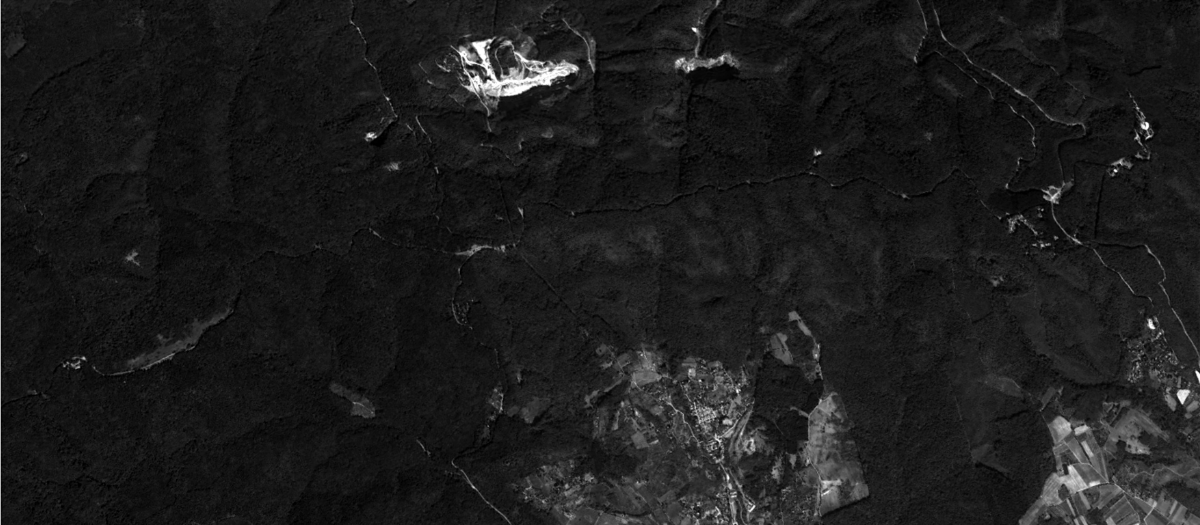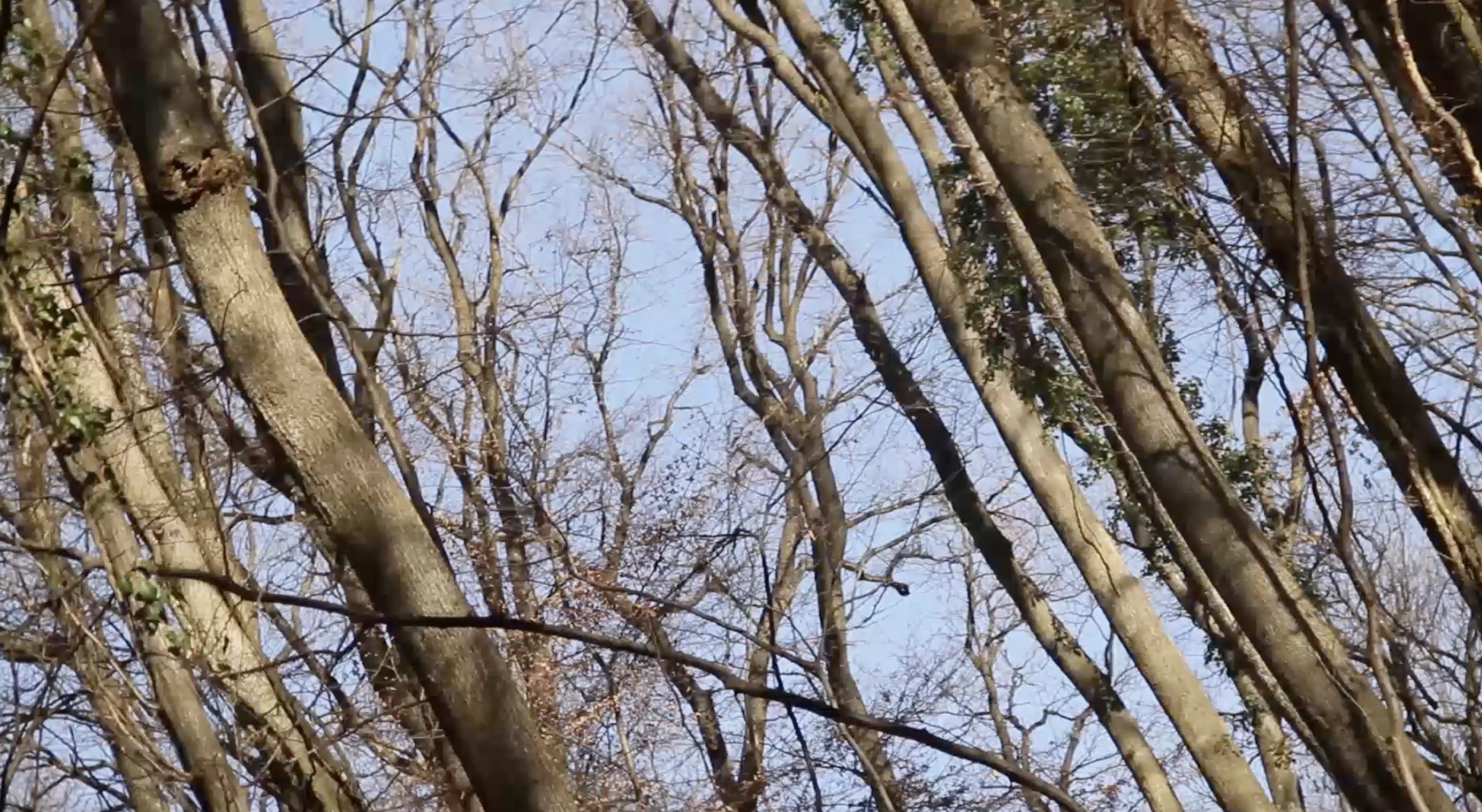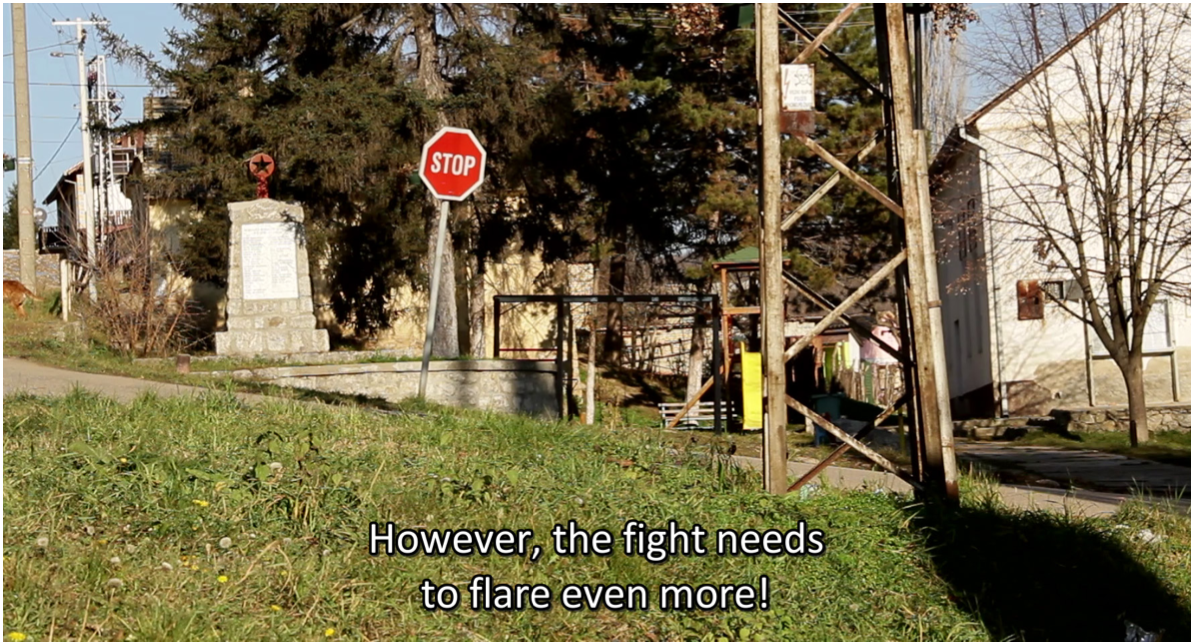Troubles with the map/
Nevolje na karti
Mixed media installation
Year: 2014
Collection: Museum of Vojvodina, Novi Sad, Serbia
This subjectively elaborated map consisting of several sites located off-trajectory in the hills of Fruška Gora, Serbia, in my work serves as a vehicle for transposition of an active relation towards a place. The relation which fosters different feelings one can develop to a familiar site, as affection, attachment, urge for defence, devotion; with their fictional and non-fictional aspects. Following a route from an abonded socialist workers hotel on the west to antifaschist monument 15 kilometres east, with a detour to a village filmed by Želimir Žilnik in the 1973 docudrama “Uprising in Jazak”, while reading original call to arms published by NOB (Peples Antifaschist Movement) in 1943., this map is not a stable area or geography, but an account of a place. It is realised through a montage of real and imagined events, personal memories, local narratives and historical records. Through private attachment it recounts for a mobilization in memory and importance of a place in the moment of danger, which is here on the verge of illusion.
The work consists of three videos, light table with exhibited maps of the area printed on acetate, and a text.

A few months ago the following headline filled the papers:
Old Bomb in the Centre of the City- on the construction yard in Budimska street a one-ton bomb of unknown origin and strength was found!
Like a piece of some possible and destructive history, the bomb was lying under the city beneath daily life of the inhabitants of that building, beneath passersby. The piece of some event which saved itself for later, for a moment in the future in which it would make an appearance, a potential of what could have been. This bomb is one of the many left from several wars during previous century. And it seems that the locals in many cases know where they are, but decide to leave them be. The fear which those bombs falling from the sky used to cause once has disappeared. The fear was left somewhere in the past century, along with the event that brought them there. As that event went into history, the material through which the conflict manifested itself lost its strength as well. As if these bombs are not bombs anymore, since their war is long over. The fact that they are still there does not change a thing. Their strength has faded away. “History is hysterical: it is constituted only if we consider it, only if we look at it and in order to look at it, we must be excluded from it.” Barthes’ passage corresponds perfectly to this certainly hysterical situation. In order to leave history be history, the inhabitants somehow excluded themselves from the remains of the past under their feet. That past was not part of their everyday life, they were not its witnesses. For, as Barthes continues, “a living soul is the very contrary of History, it is what belies it, destroys it for the sake of its own history.” This would be very appropriate, except in this case the remains of the event did not lose its strength. Those remains are still able to explode and finish their task. What could we make of it if that bomb exploded now, 60 years later, beneath unsuspecting footsteps? Would that moment be part of history or the present?


